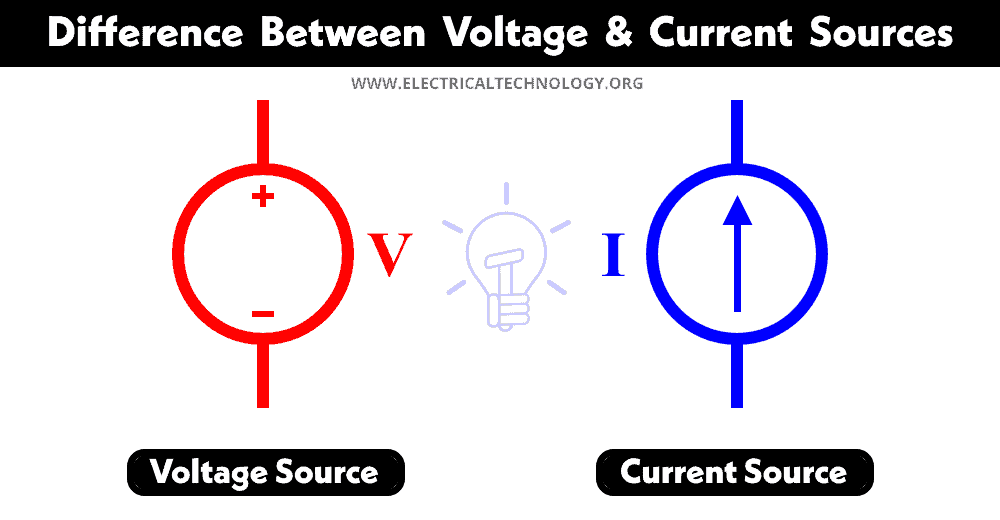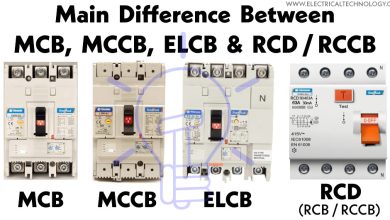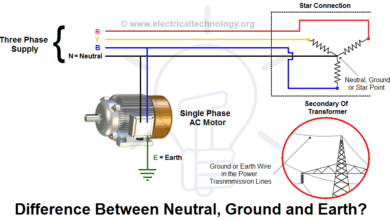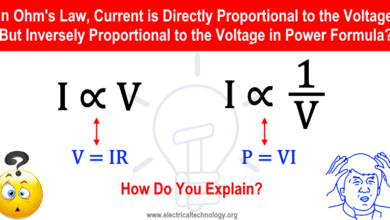Difference Between Voltage Source and Current Source
What is the Difference Between Current Source and Voltage Source?
Voltage source and current source both are electrical sources that provide electrical energy to drive an electrical load. Both of them have two terminals and polarity. But they are different from each other in characteristics. Let’s look into their basics first.
Electrical Source
An electrical source is a device that converts any other form of energy such as chemical, mechanical, thermal, hydel, solar, etc. into electrical energy. It provides electrical energy to run an electrical load through a closed loop circuit. Examples of electrical sources are battery (converts chemical energy), generator (converts mechanical energy), solar panels (converts solar or light energy), wind turbines (converts wind energy), etc.
Some electrical sources can deliver as well as absorb electrical energy such as a battery. They convert electrical energy into chemical energy and store it for later use.
Electrical sources can be classified into two types
AC and DC are both classified into both these types of sources where the AC source provides sinusoidal variation in voltage while the DC source provides constant voltage.
Voltage Source
A voltage source is a type of electrical source that provides electrical energy while having constant voltage across its terminals irrespective of the amount of the current being delivered. It has two terminals whose potential difference is always constant no matter if there is a load connected or not.
Examples of Voltage Sources: Batteries, Generators/Alternators and a single cell with an internal series resistance etc.
The voltage source can be further classified into ideal and practical voltage sources.
Ideal Voltage Source
An ideal voltage source has two terminals whose voltage remains constant and does not depend on the amount of current flowing through it. It is also known as an independent voltage source as its voltage does not depend on the current being drawn from it. The IV curve of ideal voltage source forms a straight line and does not vary with the current as shown below.
Ideal voltage source has the following characteristics
- Ideal voltage source offers constant voltage independent of the load current.
- Ideal voltage source has zero internal resistance i.e. no voltage drop in it.
By looking at the 2nd point, if we connect both terminals of an ideal voltage source together to make a short circuit, there should be no potential difference (as there is no internal resistance and part of the same conductor). But it contradicts the first point where it says that the voltage of the ideal source remains constant.
Therefore ideal voltage sources are only considered for circuit analysis. In the real world, the voltage of every voltage source decreases when the amount of current being drawn is increased and it has some internal resistance. These are known as practical voltage sources.
Practical Voltage Source
A practical voltage source has two terminals whose voltage or potential difference depends on the current flowing through it. It decreases with an increase in the load current. The IV curve of the practical voltage source decrease with an increase in current.
Every voltage source has some internal resistance Rs, where the voltage drops before appearing on its terminals. The voltage also decreases when the load current is increased.
- Practical voltage source voltage depends on the amount of current being drawn from it.
- Its terminal voltage is less than the actual voltage generated by the source due to internet resistance.
- It has internal resistance Rs in series with the ideal voltage source
- Its voltage depends on the external resistance connected with it.
Current Source
A current source of an electrical source that delivers electrical energy while delivering constant current irrespective of the voltage across it. It has two terminals and provides constant current that does not depend on the load. It must be in a closed circuit because there is no current flow in an open circuit.
Examples of Current Sources: Photovoltaic cells and betavoltaic cells, a single cell with an internal parallel resistance and current regulator ICs and diodes, field transistor in its saturation region, bipolar transistor away from its saturation region, HID & LED driver, photomultiplier etc.
Current source is also classified into an ideal and practical current source.
Ideal Current Source
An ideal current source provides constant current independent of the voltage across it or change in the connected load. It has infinite internal resistance. The IV graph of ideal current source forms a straight line as given below.
Ideal current source has the following characteristics
- It provides constant current independent of variation in the load or voltage across it.
- It has infinite internal resistance.
Practical Current Source
Practical current sources provide current that varies with the load. The current decrease with an increase in the load. It has very high internal resistance. It is represented by an ideal current source with internal resistance in parallel.
The parallel resistance it’s very large but still, it is not infinite. When a load is connected, a small portion of that current flows through the internal resistance which reduces the current delivered. Practical current source has the following characteristics
- Its current decrease with an increase in the voltage or load.
- Its current decreases with time
- It has very high internal resistance (not infinite).
- Its internal resistance is in parallel with the ideal current source.
Differences between Voltage Source and Current Source
The following table shows the comparison between Current source and voltage source.
| Voltage Source | Current Source |
| An electrical source that provides fixed voltage independent of current being drawn or load. | An electrical source that delivers a fixed current independent of the voltage across it. |
| Symbol of Voltage Source: |
Symbol of Current Source: |
| It provides fixed voltage and variable current. | It provides fixed current and variable voltage. |
| Its symbol has (+,-) signs showing voltage polarity. | Its symbol has an arrow showing the direction of the current. |
| Its value is in the unit of Volts “V”. | Its value is in the unit of Amperes “A”. |
| It has very small internal resistance, ideally zero. | It has very high internal resistance, ideally infinite. |
| The internal resistance is in series with the source. | The internal resistance is parallel to the source. |
| Voltage sources in series add together while in parallel remains same. | Current sources in parallel are added together while remains the same in series. |
| Its voltage remains constant in open and closed circuits. | Its current remains constant in a closed current, as there is no current flow in an open circuit. |
| Practically its voltage slightly decreases with an increase in load current. | Practically its current decreases with an increase in load. |
| The load resistance is always higher than the internal resistance. | The load resistance is always lower than the internal resistance. |
| It is represented as an ideal voltage source with a series internal resistance. | It is represented as an ideal current source with parallel internal resistance. |
| Examples: Batteries, Generators, Alternators and Single Cell with internal resistance connected in series etc. | Examples: Photovoltaic cells, current regulator ICs and diodes, HID & LED driver, photomultiplier nd Single Cell with internal resistance connected in parallel etc. |
Related Posts:
- Difference between AC and DC (Current & Voltage)
- Difference Between Current and Voltage
- Difference Between EMF and MMF
- Difference Between Voltage and EMF?
- Difference between Electron Current and Conventional Current
- Difference Between Current Transformer & Potential Transformer
- Difference between Electric Field and Magnetic Field
- Difference Between Electric and Magnetic Circuit
- Differences Between Electrostatic & Electromagnetic Terms
- Difference Between Single Phase and Three Phase Power Supply
- Difference Between Series and Parallel Circuit – Comparison
- Difference Between Overcurrent, Overload and Overvoltage
- Difference Between Electric Current and Electric Charge
- Difference Between Active and Reactive Power – Watts vs VA
- Difference between Analog and Digital Multimeter
- Difference Between a Battery and a Capacitor











